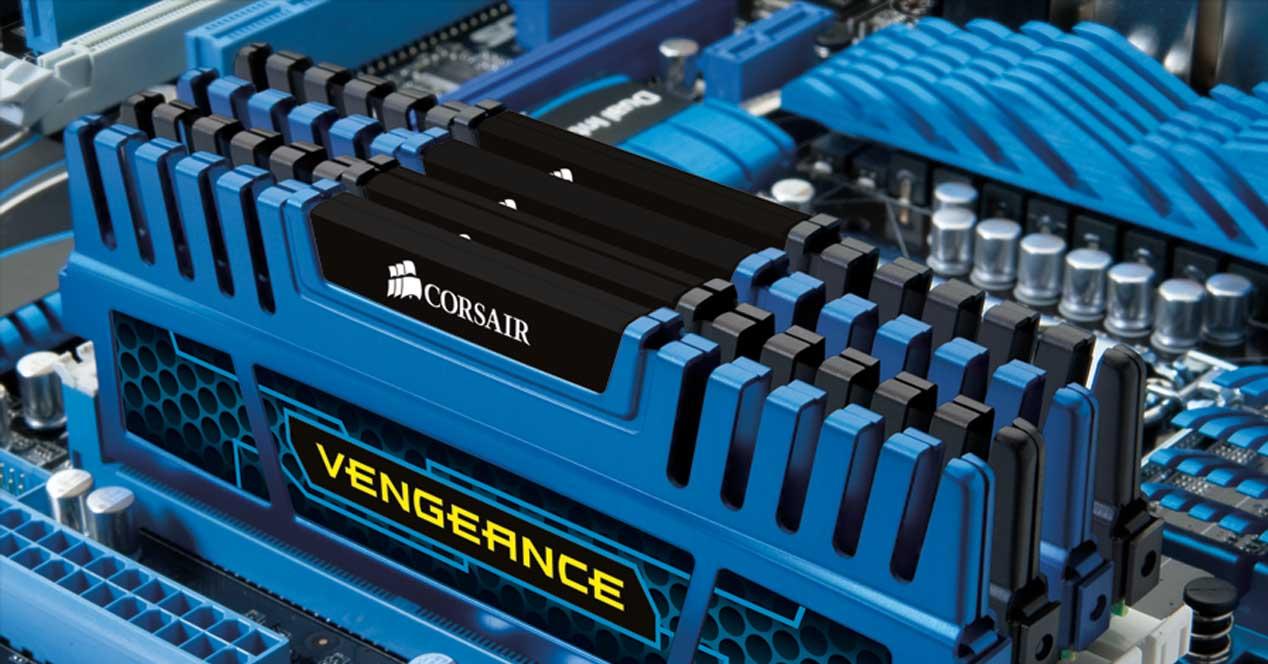Have you noticed that your PC does not have enough ramand you have decided to add more, but is it strictly mandatory to buy the exact same brand and model as the modules you have already installed, or can you use any RAM memory compatible? In this article we are going to talk about it and we are going to give you a series of tips that you should always follow when you extend the RAM memory of your PC.
RAM memory is a fundamental component of any PC, since it represents a temporary storage space for all running programs, at the same time it is a place where the calculations made by the processor are stored to execute the tasks entrusted to him. we entrust at any time. Over time the need for more memory capacity in the PC has grown, and in fact if the “norm” a few years ago was 8 GB in a gaming PC, today it is already 16 GB and, despite this, in the latest generation PCs equipped with DDR5 32 GB is already the capacity that has been established as standard.
Increasing PC memory, is it as easy as buying more RAM?
There is a popular belief that if you want to expand your PC’s memory, you need to buy the same brand and model of RAM that you already have installed. In fact, if you buy the exact same brand and model, you can be sure that you won’t have any compatibility or configuration issues, although the easiest thing to do is to remove the RAM you have installed. and assemble a whole new kit, instead of adding the new one you installed. buy what you already have.
However, not everyone has the option of purchasing the exact same brand and model of memory they already have installed, and not everyone is willing or able to purchase a new high-capacity kit to replace the RAM they already have in the PC. The e asiest and most inexpensive way is to buy a memory kit to add to what you already have and thereby expand the PC’s memory, but if you’re planning on doing this there are a few considerations. that you must take into account before:
- Same brand and same model: although it is the ideal and the most recommended to avoid problems, it is not really mandatory. Normally, you can mix different brands and models of RAM without too much trouble, as long as they are compatible with your motherboard. For example, don’t rush into buying DDR5 memory if your current memory is DDR4, you won’t be able to (plus you won’t be able to physically mount the new memory modules anyway). The RAM must be of the same type.
- Same speed and latencies: Likewise, the ideal is that the new RAM you buy to expand the PC should be of the same speed as what you currently have, as long as what you are doing is adding more modules to those you have already, of course. This will avoid compatibility issues, but if not, you don’t have to worry either: the system will run at the slowest RAM speed. For example, suppose you currently have 8GB of 3200MHz DDR4 RAM and you purchase an additional 8GB at 3600MHz: if you do, all four modules will run at 3200MHz (although you can manually set 3600MHz in the BIOS, but you’ll do it) overclock to 3200 MHz). The same thing happens with latencies.
- Do they have to be of the same capacity?: This question is the easiest to answer: definitely not. You can have 2×4GB installed in your system and install 2×8GB, totaling 24GB of RAM, with no problem (as long as your motherboard supports 8GB modules, of course).
- Do not use odd modules: It’s really important. If your PC has a dual-channel memory architecture (which is most common in desktop PCs), the modules should be paired for best performance. That is, if you had 2 modules of 4 GB each, do not install only one additional module to expand the memory but two, so that there are four in total. Otherwise, you will have two modules running dual-channel and one single-channel, which will hamper system performance. This will work fine, but is not recommended for this reason.
Add RAM or replace it with new, which is better?
Everything we explained to you in the previous section is pure theory, because in practice you may encounter a very different situation. As you know we have tested and analyzed dozens of RAM memory kits and we can tell you based on this experience: the reality is that it all depends on the motherboard and its compatibility, there have been times where we mixed kits of the same capacity and speed but with different latencies and there was no way for the PC to boot, as the motherboard was unable to match the latencies of the installed memories.
In the past, many people chose to buy more RAM to expand the overall capacity of the PC and had no problems, but as memory technology has advanced and faster and faster kits are appeared, compatibility problems have become more and more frequent, which means that all the premises that we have explained to you before are not always fulfilled for this very reason.
In short, and answering the question of this topic, today and especially with the new generation DDR5, it is better to completely change the memory for a new one and to throw away the old one, since we add modules of different speeds and , especially, , latencies, often cause problems. This, again, we will tell you based on our own experience, because it will always depend on each individual case because not all memories or motherboards are the same, and they do not work the same way with a processor than with another. As always, it all depends.










